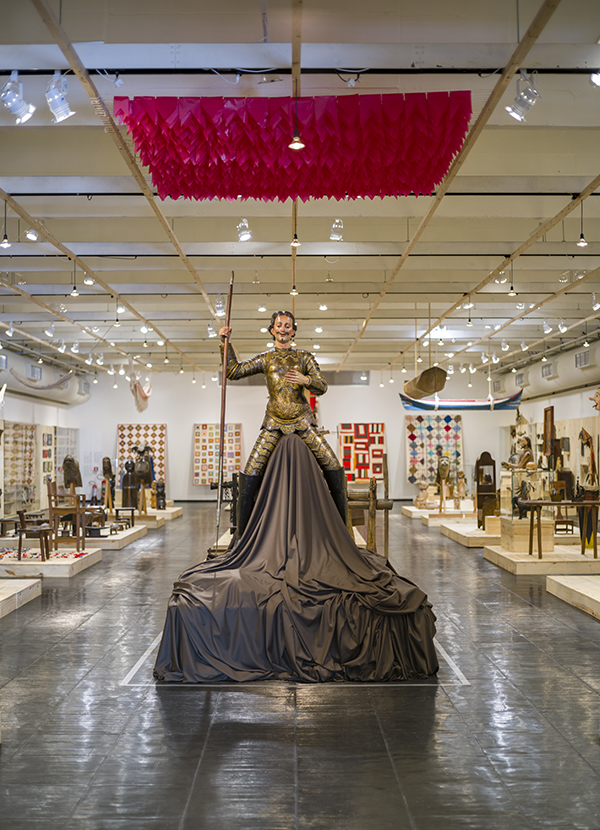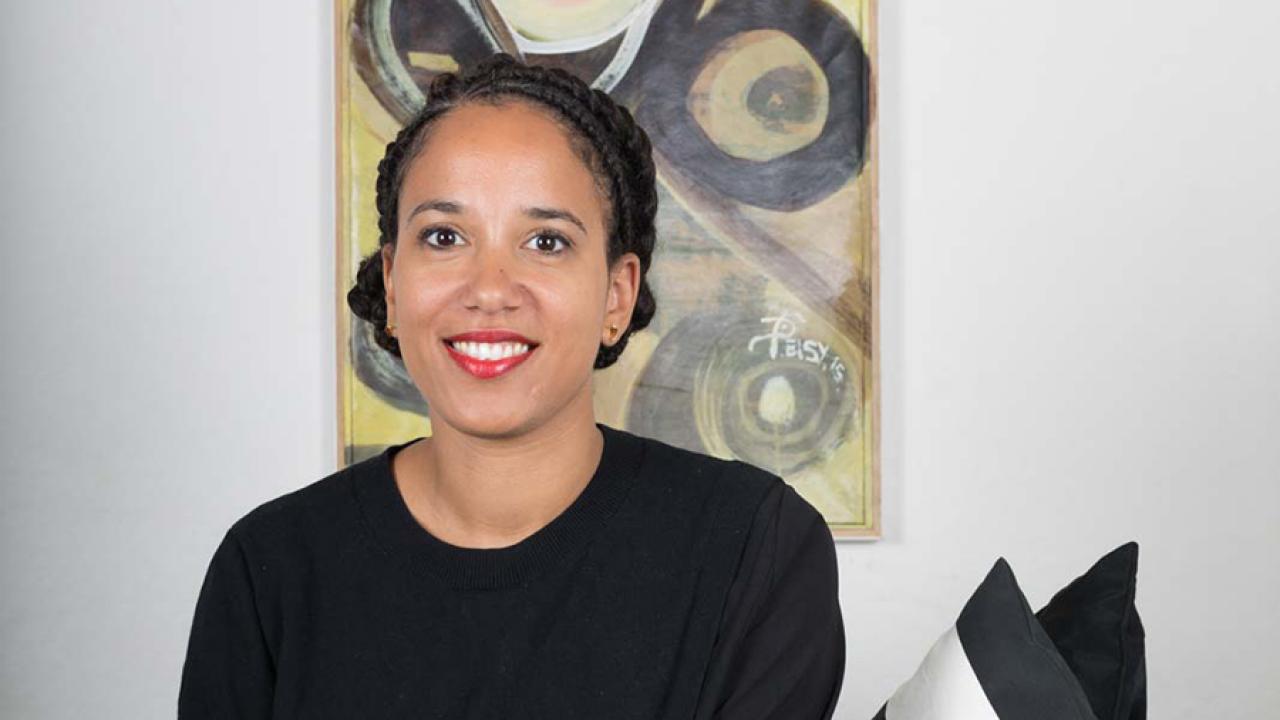Decolonial Documents: Part Two
From Julieta González to Simon Njami, five artists, curators and writers discuss the projects that have informed their thinking around decolonizing culture
From Julieta González to Simon Njami, five artists, curators and writers discuss the projects that have informed their thinking around decolonizing culture

In the second of a six-part series, timed with the specially-themed November-December issue of frieze, we asked five artists, curators and writers, whose work has been involved with the challenges of decolonizing culture, to discuss the projects that have informed their thinking – from exhibitions and publications to more intangible and transient networks, whose effects are often more felt than documented, though no less significant.
Click on the artist’s name to jump to their entry.
Sean O’Toole
Julieta González
Ugochukwu-Smooth C. Nzewi
Simon Njami
Vivian Ziherl
Sean O’Toole
Sean O’Toole is a writer and editor living in Cape Town, South Africa.

Okwui Enwezor’s art criticism from the 1990s forms an essential part of any primer on decoloniality. By turns angry and self-possessed, as interested in big ideas as the minutiae of the particular, his early writings read both as a coda to gilded debates about globalism initiated in New York and Paris a decade earlier and as a new front in ongoing discussions about postcolonial identity, plurality, whiteness and the endurance of Western hegemony. A short review of ‘Fusion’ (1993) – a showcase of five Senegalese and Ivorian artists curated by art historian Susan Vogel and artist Ousmane Sow at the Museum for African Art in New York – is instructive. ‘Can we – descendants of both colonizers and colonized – acknowledge the colonial karmic debt yet build from it into some more generous, less volatile geopolitical fusion?’ asked critic Thomas McEvilley, who authored the accompanying catalogue. Not if ‘Fusion’ was the model, wrote Enwezor in the launch edition of Nka: Journal of Contemporary African Art in 1994. Enwezor’s accusation that the museum was ‘fishing for applause from certain quarters’ keys into a major theme of his criticism: the ‘duplicitous needs of Western paternalism’. A 1996 review for frieze of x – a mega festival of African arts held across the UK – presents a distillation of his intellectual position: Enwezor accused the organizers of misrepresenting Africa by reducing a ‘complex land mass’ to ‘a monolithic structure’. Drawing on his biography as an urbane Nigerian, who arrived in the US in 1982 to study politics at Jersey City State College, later seguing into performance poetry, Enwezor railed against the Western habit of essentializing African identity: a strategy that denies cosmopolitanism and transnational entanglement. Ideology and race are recurring points of analysis in Enwezor’s criticism. His 1997 essay ‘Reframing the Black Subject’ (Third Text no. 40) surveyed ‘the new uses and revindication [sic] of whiteness’ through the lens of post-apartheid South African art. Notwithstanding the particularity of his analyses, Enwezor’s observations on whiteness as ‘an exorbitant space of subjectivity’ that is ‘unimpeachable and irrefutable’ remain starkly prescient in the Trumpian present.
‘The Hand of the Brazilian People’, 1969, Museu de Arte de São Paulo
Julieta González
Julieta González is artistic director of Museo Jumex, Mexico City, Mexico.

In 1969, the Museu de Arte de São Paulo on Avenida Paulista opened to the public with two main exhibitions: the now-iconic collection display of glass easels and ‘A mão do povo brasileiro’ (The Hand of the Brazilian People). Conceived and organized by the building’s architect, Lina Bo Bardi, in collaboration with theatre director Martim Gonçalves and cinematographer Glauber Rocha, the exhibition sought to inscribe folk art and culture within the domain of the fine art museum. It presented a panorama of Brazil’s rich material culture, from the country’s northeast to its south. The exhibition featured around 2,000 objects – including carrancas (figureheads), ex-votos, textiles, clothing, furniture, tools, kitchen utensils, musical instruments, toys, religious figures, paintings and sculptures – representative of diverse cultural traditions that ranged from the colonial period to the 1960s. Its presentation of artefacts from the perspective of a ‘crafts-industrial design identity’ based upon ‘technical production connected to the reality of the materials’ positioned the exhibition within a distinct ideological framework that clearly questioned the imperatives behind a fine arts museum with the largest holdings of canonical Western art in South America, in the continent’s largest and most industrialized city. The multidimensional practice of the Italian-born Bo Bardi during this period makes it possible to consider her writings, exhibitions, furniture and building designs as early manifestations of an epistemic break with the visual and formal vocabularies of Western culture. The more recent concept of ‘coloniality’, as well as the earlier formulations of dependency theory that emerged during the 1960s and ’70s, have become tools to rethink the world beyond the East-West divisions of the cold war period, beyond Marxism and critical theory, positing what is now called the Global South as an active participant in the articulation of new forms of knowledge and agency. ‘A mão do povo brasileiro’ incorporated the vocabulary of the popular within a fine arts museum model, exemplifying an ideological shift away from the Western canon and the rhetoric of developmentalism that guided the modernization process in Brazil and Latin America.
Présence Africaine, 1947–ongoing
Ugochukwu-Smooth C. Nzewi
Ugochukwu-Smooth C. Nzewi is curator of African Art at the Cleveland Museum of Art, USA.

In 1947, the late Senegalese writer and professor Alioune Diop established Présence Africaine (African Presence) in Paris as a publishing platform for black racial consciousness. The launch of the quarterly journal, which combined cultural, political and literary activism, was an act of refutation of the miserable social and intellectual rejection black people faced in Paris and in the larger Western world following centuries of the trans-Atlantic slave trade and European imperialism. In its formative years, Présence Africaine combined the ideologies of New Negro and Négritude movements as well as African personality philosophy to define its intellectual objectives. Whereas the New Negro proposed a racial rehabilitation that would engineer a black cultural presence and ultimately shore up a declarative political agenda in the US in the 1920s and ’30s, Négritude emerged contemporaneously in Paris as a response to Europe’s cultural turmoil, postwar anxieties and the ‘borrowed personality’ imposed on colonized subjects by the French cultural policy of assimilation. The concept of African personality was an insistence on the African person as civilized, capable of self-rule and, fundamentally, an equal member of humanity – a forceful ideology for African cultural nationalisms and anticolonialism after World War II. Arguably, no magazine or journal was as influential as Présence Africaine – especially from the mid-20th century to the 1980s – in rallying black solidarity and challenging a Western humanism that projected universal values but justified white racial superiority. At the height of its influence, the journal helped organize the first and second Congress of Black Writers and Artists in Paris and Rome in 1956 and 1958, respectively, and the first World Festival of Black Arts in Dakar, Senegal, in 1966. These events championed decolonization and promoted black modernism in an international context. Ultimately, Présence Africaine may have inspired leading black journals such as Revue Noire and Nka: Journal of Contemporary African Art, both of which emerged in the 1990s as advocates of the inclusion of African and black perspectives in intellectual dialogue on global contemporary art and culture.
Simon Njami
Simon Njami is an independent curator, lecturer, art critic and novelist based in Paris, France. He is the artistic director of Dak’art, the Biennale of Dakar, Senegal.

Since the beginning of this century, we have witnessed an evolution in the representation of non-Western cultures and the deconstruction of Eurocentrism in the contemporary art world. With respect to the African continent and its artists, one key effort was the creation of Revue Noire (Black Review), a magazine I founded in 1991 with Jean Loup Pivin, which presented African artists according to a perspective never before adopted in publishing. We questioned the essentialist Western gaze by covering artists who were grounded in their time, rather than simply revisiting traditional African practices. The first issue of Revue Noire was published shortly after the 1989 exhibition ‘Magiciens de la Terre’ at Centre Pompidou, and the same year the ethnographer Susan Vogel organized ‘Africa Explores’. I think the magazine strongly contributed to the re-evaluation of what was, before then, considered a ‘no man’s land’ or an ethnographic field.
‘Balance’, 1990, Queensland Art Gallery, Brisbane
Vivian Ziherl
Vivian Ziherl is the founding director of the art and research foundation Frontier Imaginaries, which has staged large-scale projects with partners including Columbia University, e-flux and theVan Abbemuseum, among others.

The Netherlands and Australia aren’t an intuitive match. It’s entirely by dint of fortune that I’ve come to work between the two countries over the past eight years. In terms of anticolonial arts, however, they make for a compelling alignment.
In Australia, Indigenous art has always held an eruptive power. Its international cachet is desirable to elites, yet the sovereignty of Indigenous art remains always beyond the threshold of settler governance. In 1990, ‘Balance’, a survey exhibition at the Queensland Art Gallery in Brisbane, fully invoked this potential. The initiative emerged amid the rebellious energies surrounding the 1988 Australian bicentenary, and research for the show was led by a Murri advisory team. The result was an exhibition that handsomely combined urban Indigenous, remote Indigenous and non-Indigenous works. In his 2017 essay, ‘All Around the World (Or the Myth of Fingerprints)’, the artist Vernon Ah Kee observed: ‘“Balance” has only become more significant as time goes on, because there’s never been an exhibition like it since. Why? It’s probably too subversive.’In the Netherlands, a serious museum survey such as ‘Balance’ still feels a long way off. Recently, however, a generation raised in the Netherlands since Surinamese independence in 1975 has self-organized as a powerful civil-rights movement with tenacious cultural initiatives such as the Black Archives in Amsterdam. On the cusp of this movement, the roaming art exchange ‘Wakaman’ (2005–09) – led by artists Gillion Grantsaan, Remy Jungerman and, initially, Michael Tedja – paved the way in contemporary art. Pragmatically, ‘Wakaman’ involved exhibitions, commissions, dialogue and advocacy in an unprecedented effort from the grassroots towards rupture in Dutch contemporary art.In both Australia and the Netherlands, it is hard not to be guided like a star by the truly great women poets of a generation or so before: Oodgeroo Noonuccal, from Minjerribah, and Astrid H. Roemer, raised in Suriname but now living in the Netherlands. Also based in the Netherlands is the poet and Second International revolutionary Henriette Roland Holst, whose socialist spirit stood opposed to empire and who received a visit from President Sukarno upon his first Dutch trip following Indonesian independence.
Published in frieze, issue 199, November/December 2018, with the title ‘Decolonial Documents: A Partial History’.





















